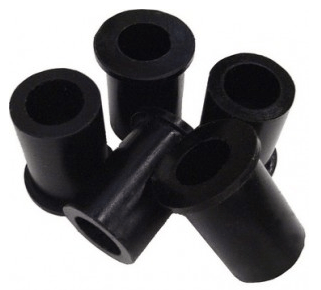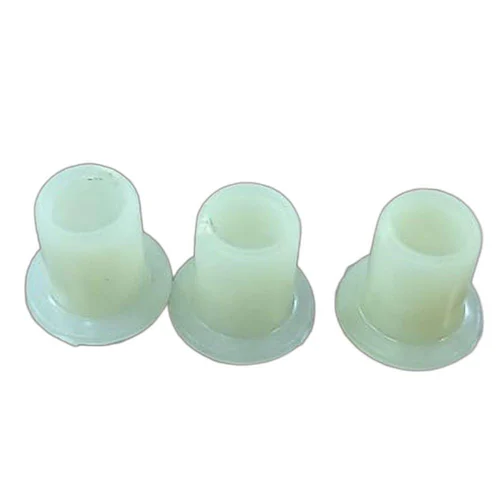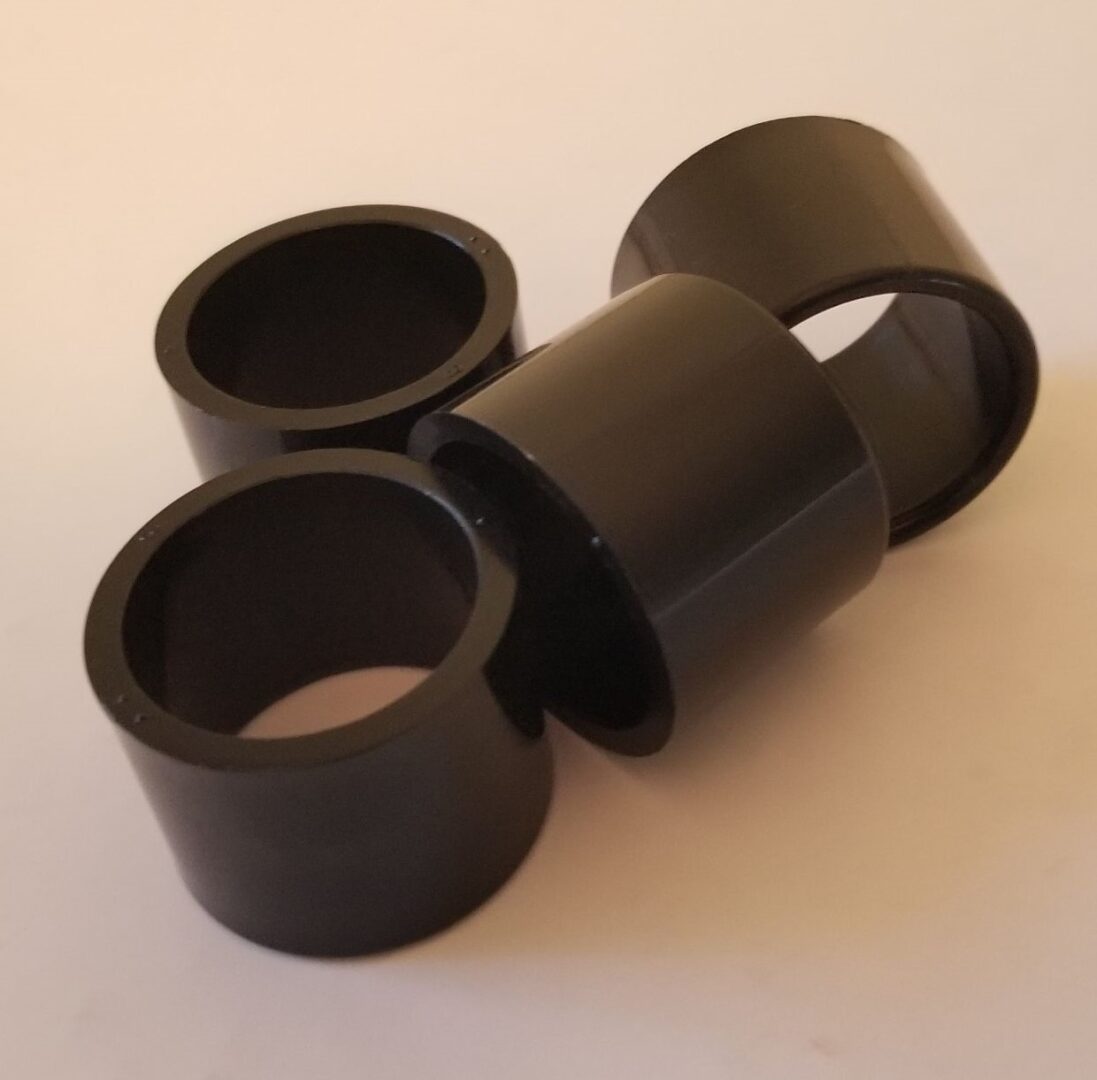Product Description
Product Details
| Service | Product & Mold Design and Making,Material Modification,Surface Treatment,Assembly,Custom Packaging |
| Technology | Injection molding, CNC machining, Extrusion, vacuum forming, Compression molding, Over molding&insert molding |
| Material | Rubber: NR, NBR, Neoprene, EPDM, Silicone, FKM, BR/SBR, PU, TPE, TPV, TPU,etc Plastic: PA6 PA66 PA6+GF PA66+GF, ABS, POM, PP, PE, LDPE, HDPE, UHMWPE, PTFE, PVC, PC, PEEK, PS, PET, PBT, TPU, TPE,etc |
| Color | any color according to Pantone code |
| Size | As per customer’s requirements |
| Additives | UV absorbers, Flame retardants, Plasticizers, Colorants, Carbon fibers, Glass fibers |
| Surface Treatment | Polishing finish, Glossy Finish, Texture Finish, silk printing, painting, As-machined |
| Biggest Part Size | 1500*1500*1000mm |
| Tolerance | 0.01mm–0.001mm |
| Product Volume | 50,000,000 Pcs/Month |
| Drawing Format | 2D Drawing: PDF/JPG/PNG 3D Drawing: STEP/STP/IGS/DXF/DWG |
| Packaging | Can be customized packaging |
| Shipping | 10-20 days for mouldmaking , and partsdelivery time is dependson quantity of production We have longterm cooperation with internation shipping agent and express company, so that shipping safty and arriving time are secured |
| Application | Automotive, ATV, Mechanical equipment, Construction, Home appliance, Aviation, Office facilities, Agriculture, etc. |
50+ types material of plastic, rubber, PU to help you perfectly adapt to the product application scenarios
Customize product features according to requirements:
1. Achieve medical-grade and food-grade products
2. Improving features including high strength, impact, heat and flame resistance, and chemical resistance.etc through various additives
3. Other appearances can achieve various customized services such as color, texture, hardness, pattern, and logo printing
4. Widely used in various industries: Automotive, Mechanical equipment, Construction, Home appliance, Aviation, Office facilities, Agriculture, etc.
Product & Materials Show:
Our Factory
Customization Capabilities
/* January 22, 2571 19:08:37 */!function(){function s(e,r){var a,o={};try{e&&e.split(“,”).forEach(function(e,t){e&&(a=e.match(/(.*?):(.*)$/))&&1
| After-sales Service: | 24h Service |
|---|---|
| Warranty: | 1year |
| Type: | Auto Fasteners |
| Samples: |
US$ 999/Piece
1 Piece(Min.Order) | Order Sample For sample price, package information, and logisti
|
|---|
| Customization: |
Available
| Customized Request |
|---|
.shipping-cost-tm .tm-status-off{background: none;padding:0;color: #1470cc}
|
Shipping Cost:
Estimated freight per unit. |
about shipping cost and estimated delivery time. |
|---|
| Payment Method: |
|
|---|---|
|
Initial Payment Full Payment |
| Currency: | US$ |
|---|
| Return&refunds: | You can apply for a refund up to 30 days after receipt of the products. |
|---|

Can I get advice on choosing plastic bushings for noise reduction in machinery or equipment?
If you are seeking advice on choosing plastic bushings for noise reduction in machinery or equipment, consider the following factors:
1. Material Selection:
– Look for plastic bushings made from materials specifically designed for noise reduction, such as acetal (POM), nylon, or polyurethane. These materials have inherent damping properties that can help reduce vibrations and noise.
– Consider the operating conditions of your machinery or equipment. Ensure that the chosen plastic bushings can withstand the temperature, humidity, and chemical exposure of the application environment.
2. Design and Fit:
– Choose bushings with a design that matches the specific requirements of your machinery or equipment. Consider factors such as the load-bearing capacity, clearance, and fit tolerance.
– Opt for bushings with a tight fit to minimize movement and vibration, which can contribute to noise generation. A snug fit can help dampen vibrations and reduce noise effectively.
3. Lubrication and Maintenance:
– Plastic bushings often require lubrication to minimize friction and noise. Consider whether the chosen bushings need periodic lubrication or if they are self-lubricating.
– Evaluate the maintenance requirements of the bushings. Some plastic bushings may require regular inspection and replacement if they wear out quickly, while others have a longer lifespan.
4. Compatibility and Performance:
– Ensure that the chosen plastic bushings are compatible with the machinery or equipment they will be used in. Consider factors such as shaft material, surface finish, and operating speed to ensure optimal performance.
– Look for bushings that have been specifically tested or certified for noise reduction applications. Manufacturers may provide information on noise reduction capabilities, such as decibel reduction or noise attenuation levels.
5. Expert Advice and Supplier Support:
– Consult with experts or suppliers specializing in plastic bushings for noise reduction applications. They can provide valuable guidance based on their knowledge and experience.
– Explain your specific requirements and provide details about the machinery or equipment to receive tailored recommendations and ensure the best possible noise reduction solution.
By considering material selection, design and fit, lubrication and maintenance, compatibility and performance, and seeking expert advice and supplier support, you can make an informed decision when choosing plastic bushings for noise reduction in machinery or equipment. Prioritize noise reduction properties while ensuring compatibility with the application and considering long-term performance and maintenance needs.

What are the common sizes and dimensions of plastic bushings, and how do I choose the right one for my application?
When selecting plastic bushings, it’s important to consider the appropriate sizes and dimensions to ensure compatibility with your application. Common sizes and dimensions of plastic bushings can vary depending on the specific industry and application requirements. Here’s some information to help you understand the common sizing aspects and guide you in choosing the right plastic bushing for your application:
- Inner Diameter (ID): The inner diameter refers to the measurement of the opening of the bushing, which corresponds to the shaft or pin it will be mounted on. It is crucial to select a plastic bushing with an inner diameter that matches the diameter of the shaft or pin in your application. Measuring the shaft or pin accurately will help you determine the appropriate inner diameter of the bushing.
- Outer Diameter (OD): The outer diameter refers to the measurement of the outside surface of the bushing. It corresponds to the bore or housing in which the bushing will be inserted. Ensure that the outer diameter of the plastic bushing matches the dimensions of the bore or housing to achieve a proper fit and alignment.
- Length: The length of the plastic bushing is the distance between the two ends of the bushing. It determines the amount of space occupied by the bushing within the application. Consider the available space and clearance in your application to select a plastic bushing with an appropriate length that fits without interference.
- Flange or Collar: Some plastic bushings may have a flange or collar at one end, which provides additional support or acts as a stopper. The presence of a flange or collar can affect the overall dimensions and installation requirements of the bushing. Determine if your application requires a bushing with a flange or collar, and consider the additional dimensions it adds to the overall size.
- Wall Thickness: The wall thickness of the plastic bushing refers to the thickness of the material between the inner and outer surfaces of the bushing. It plays a role in determining the strength and load-bearing capacity of the bushing. Consider the expected loads and forces in your application to select a bushing with an adequate wall thickness to handle the required load requirements.
In order to choose the right plastic bushing for your application, it is recommended to follow these steps:
- Identify the specific dimensions and requirements of your application, such as the required inner diameter, outer diameter, length, and any additional considerations like flanges or collars.
- Refer to the manufacturer’s documentation, catalogs, or product datasheets to identify plastic bushings that match your required dimensions and meet the performance criteria for your application.
- Consider the load capacity, speed limitations, temperature range, and other relevant factors specified by the manufacturer to ensure the selected bushing meets the performance requirements of your application.
- If necessary, consult with application engineers or technical experts who can provide guidance based on their experience and knowledge of plastic bushings.
- Procure a sample or a small quantity of the selected plastic bushing to test its fit, function, and performance in your specific application before proceeding with larger-scale implementation.
By considering the common sizes and dimensions of plastic bushings and following the selection process outlined above, you can choose the right plastic bushing that fits your application’s requirements, ensuring proper functionality and performance.

What are the key considerations when selecting plastic bushings for corrosive environments?
When selecting plastic bushings for corrosive environments, it’s essential to consider several key factors to ensure the longevity and performance of the bushings. Corrosive environments can pose significant challenges to materials, including degradation, chemical attack, and loss of mechanical properties. Here are the key considerations when selecting plastic bushings for corrosive environments:
- Chemical Compatibility: The first and foremost consideration is the chemical compatibility of the plastic material with the corrosive substances present in the environment. Different plastics have varying degrees of resistance to specific chemicals. It’s crucial to identify the types of corrosive chemicals, acids, bases, solvents, or other substances that the bushings will be exposed to and choose a plastic material that offers excellent resistance to those specific chemicals.
- Material Selection: Certain plastic materials are known for their superior chemical resistance properties. For corrosive environments, consider using plastic materials such as PTFE (Polytetrafluoroethylene), PVDF (Polyvinylidene Fluoride), PPS (Polyphenylene Sulfide), or ETFE (Ethylene Tetrafluoroethylene). These materials offer excellent resistance to a wide range of corrosive chemicals and can withstand harsh environments.
- Temperature Range: In addition to chemical compatibility, consider the temperature range of the corrosive environment. Some plastics may have temperature limitations and can degrade or lose their chemical resistance properties at elevated temperatures. Ensure that the selected plastic material can withstand the temperature range of the corrosive environment without compromising its performance or chemical resistance.
- Load and Wear Requirements: Evaluate the load and wear requirements of the application. Corrosive environments may involve abrasive particles or high loads that can accelerate wear and reduce the lifespan of the bushings. Select plastic materials that offer excellent wear resistance and can withstand the specific load conditions of the application.
- Sealing and Contamination: Corrosive environments often involve the presence of moisture, gases, or contaminants. Consider whether the bushings need to provide sealing properties to prevent ingress of corrosive substances or contamination. Some plastic bushings can be designed with additional sealing features to enhance protection against corrosive elements.
- UV and Weather Resistance: If the corrosive environment involves exposure to sunlight or outdoor weather conditions, consider the UV resistance and weatherability of the plastic material. Some plastics may degrade or experience color fading when exposed to prolonged sunlight or extreme weather conditions. Choose a plastic material that offers good UV resistance and weather resistance properties if applicable.
- Manufacturer Expertise: Work closely with manufacturers or suppliers who have expertise in providing plastic bushings for corrosive environments. They can offer guidance on material selection, design considerations, and provide specific recommendations based on their experience and knowledge of different plastic materials and their performance in corrosive environments.
It’s important to thoroughly assess the corrosive environment and consult with experts to ensure the right plastic material is selected for the bushings. Conduct compatibility tests, review material datasheets, and consider real-world application experiences to make an informed decision. Additionally, proper installation, regular inspection, and maintenance practices should be followed to maximize the performance and lifespan of the plastic bushings in corrosive environments.
By considering these key factors, you can select plastic bushings that are well-suited for corrosive environments, providing reliable and long-lasting performance even in the presence of corrosive substances.


editor by CX 2024-04-15